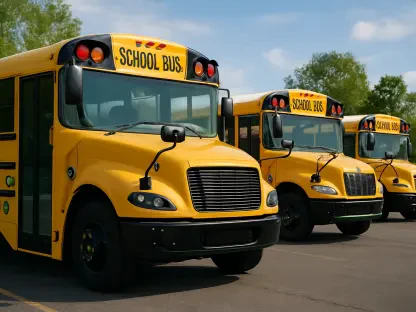As a new school year unfolds across the state, Indiana stands at a pivotal moment in its commitment to shaping the future of its students, with groundbreaking legislative changes and unprecedented financial investments aimed at transforming the educational landscape. Recent policies and budget allocations have set a high bar for K-12 education, focusing on empowering families, supporting educators, and enhancing academic outcomes. These efforts reflect a deep understanding that education is the cornerstone of a thriving society, equipping the next generation with the tools needed to succeed in an ever-evolving world. From substantial funding increases to innovative reforms, the state is taking bold steps to ensure that every Hoosier student has access to quality learning opportunities tailored to their unique needs.
Strengthening the Foundation of Learning
Unprecedented Financial Commitment
Indiana has rolled out a historic boost in education funding, allocating an additional $640 million over the next two years for K-12 tuition support, pushing the annual investment to over $9 billion. This marks the highest funding level ever dedicated to the state’s schools, with nearly half of the total budget—47%—directed toward education. Such a significant financial commitment underscores a shared belief among policymakers that robust resources are vital for fostering student success and long-term growth. This influx of funds is designed to enhance infrastructure, expand programs, and ensure schools have the means to address diverse student needs, setting a strong foundation for academic excellence across urban and rural districts alike. Beyond mere numbers, this investment signals a priority shift toward prioritizing education as a key driver of the state’s future prosperity, aiming to close gaps and elevate standards for all learners.
Empowering Educators Through Deregulation
Alongside financial support, a new law has slashed education regulations by nearly 10%, removing outdated mandates and redundant rules, including specific provisions from past health crises. This deregulation effort is geared toward reducing bureaucratic burdens on schools, allowing educators to focus more on teaching and less on administrative hurdles. By granting greater autonomy over teacher training and professional development, the policy enables schools to tailor their approaches to the specific needs of their communities and students. This shift is a deliberate move to prioritize innovation and responsiveness in the classroom, ensuring that educators can dedicate their energy to fostering a dynamic learning environment. The reduction of red tape is seen as a critical step in empowering schools to adapt quickly to changing educational demands, ultimately benefiting the quality of instruction and student engagement across the board.
Building Pathways for Student Success
Expanding School Choice for Families
Starting next year, all Hoosier families will gain the flexibility to choose the educational setting that best fits their children, with funding allocated to follow the student rather than being tied to a specific institution. This expansion of school choice represents a significant policy shift aimed at personalizing education and empowering parents to make decisions based on their child’s unique needs and aspirations. By aligning educational options with family preferences, the state is fostering an environment where students can thrive in settings that resonate with their learning styles and goals. This initiative also ties into broader efforts to make high school education more relevant to the job market, emphasizing work-based learning and career-focused experiences. Such an approach ensures that students are not only prepared academically but also equipped with practical skills for future employment, reflecting a forward-thinking vision for education.
Targeted Academic Programs for Growth
A key focus of recent reforms lies in strengthening core academic areas such as math, STEM, and reading through targeted initiatives. One notable measure automatically enrolls middle school students who meet proficiency benchmarks into advanced courses, ensuring they build a robust foundation for future opportunities in high-demand fields. Additionally, evidence-based support systems are in place for students at risk of falling behind, offering tailored interventions to bridge skill gaps. This builds on earlier successes in literacy, where a prior law established science of reading standards, resulting in a nearly five percentage point increase in third-grade literacy rates—the largest single-year jump in over a decade. With Indiana ranking sixth nationally in 4th and 8th grade reading according to recent national assessments, these programs demonstrate measurable progress across diverse student demographics, paving the way for sustained academic improvement.
Celebrating Collaborative Achievements
The strides made in Indiana’s education system are a testament to the collective efforts of dedicated educators and thoughtful legislative policies working hand in hand. The state takes pride in the tangible outcomes seen in improved literacy rates and expanded opportunities, reflecting a unified commitment to student success. Beyond individual reforms, this progress highlights the importance of collaboration between lawmakers, schools, and communities in addressing the complex challenges of education. The focus on empowering students, supporting teachers, and engaging families creates a holistic approach that strengthens the entire educational ecosystem. As these initiatives continue to unfold, they lay the groundwork for a future where every Hoosier child can access the resources and support needed to excel, ensuring that the benefits of these efforts resonate for generations to come.









